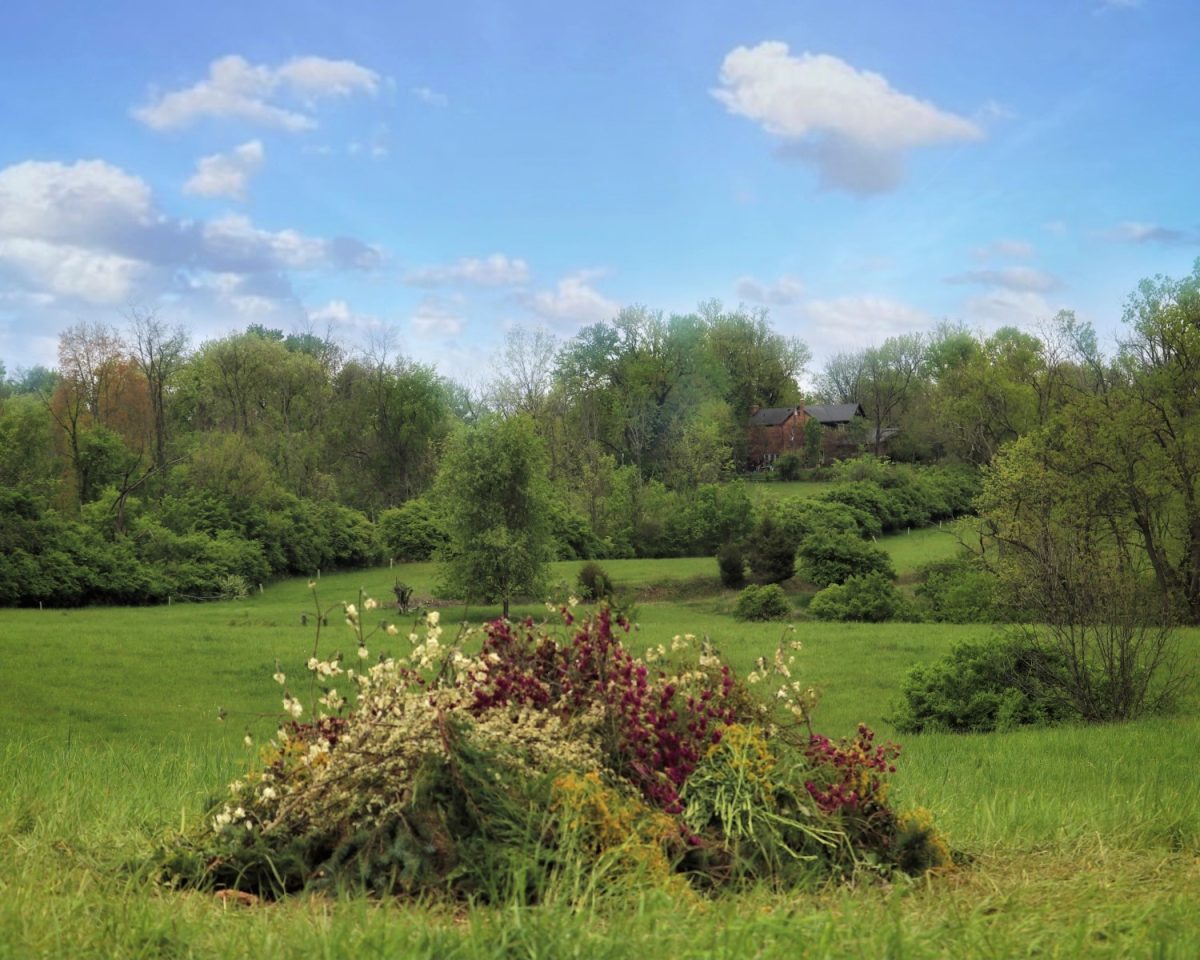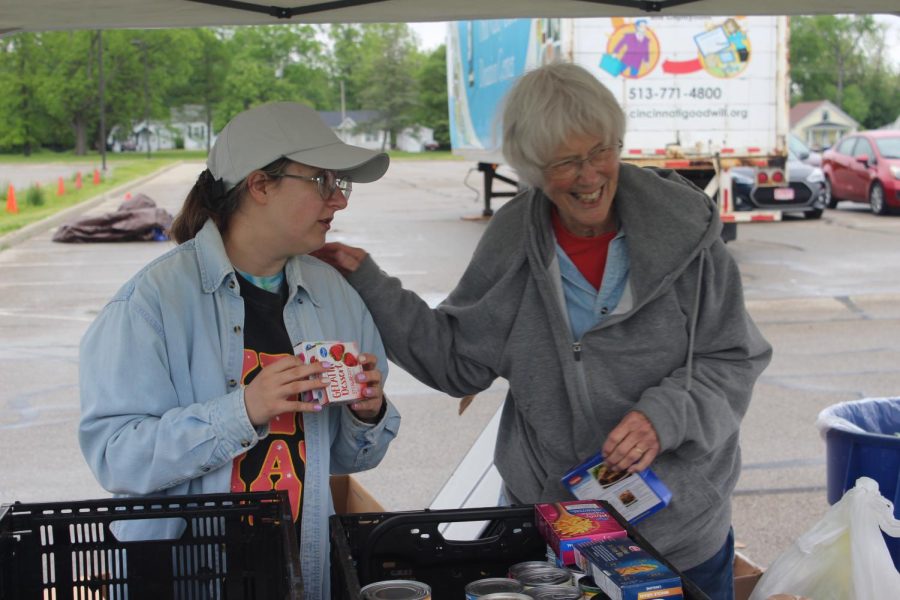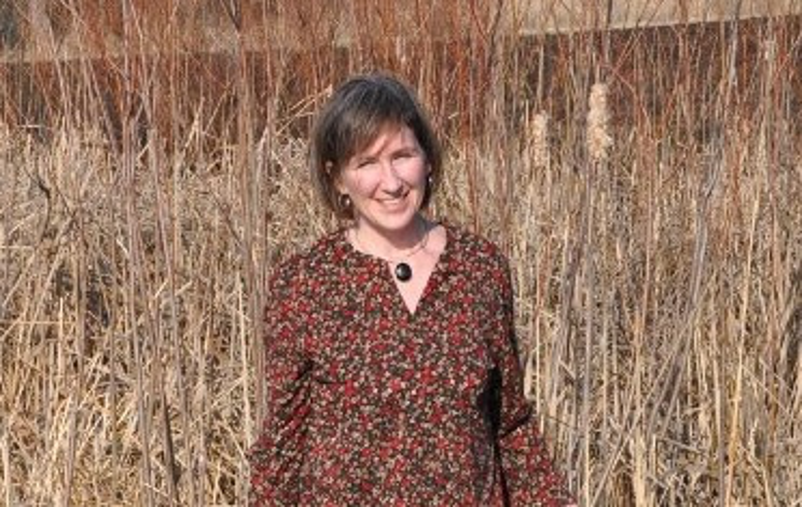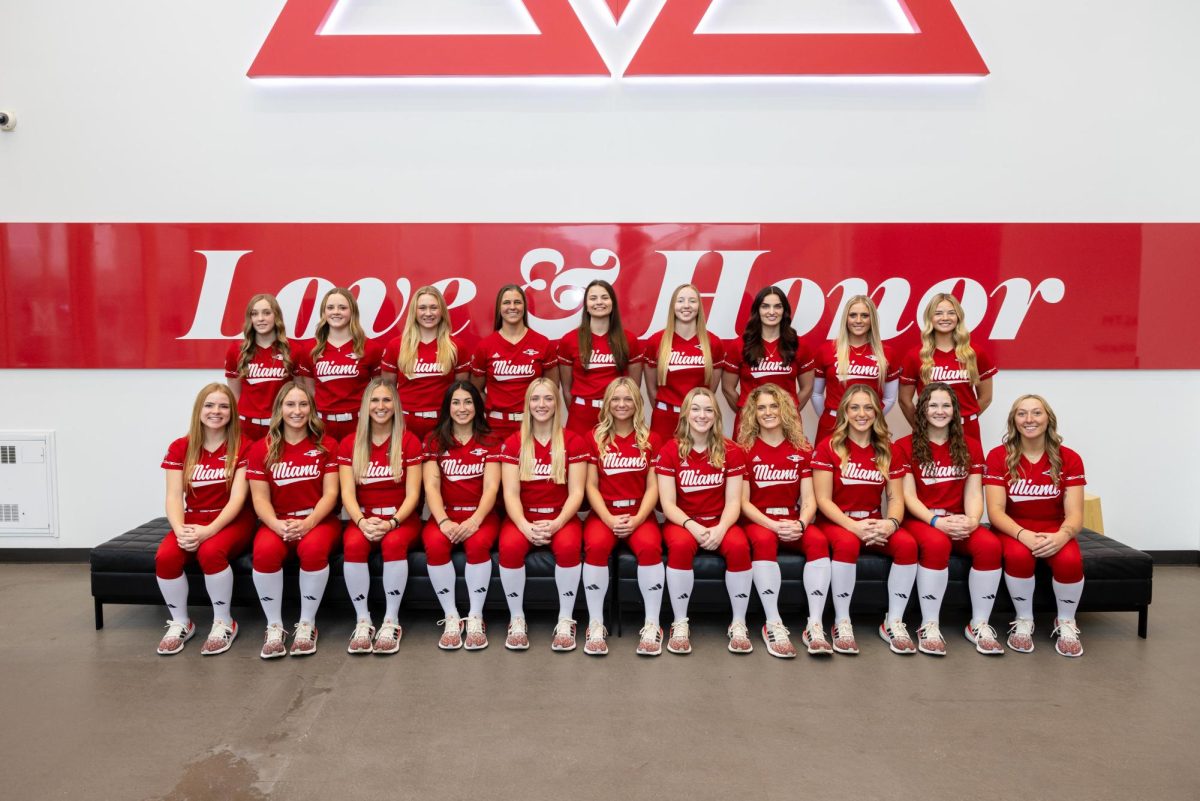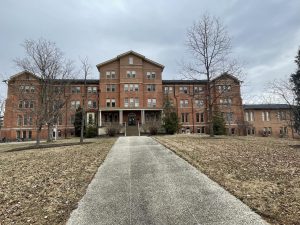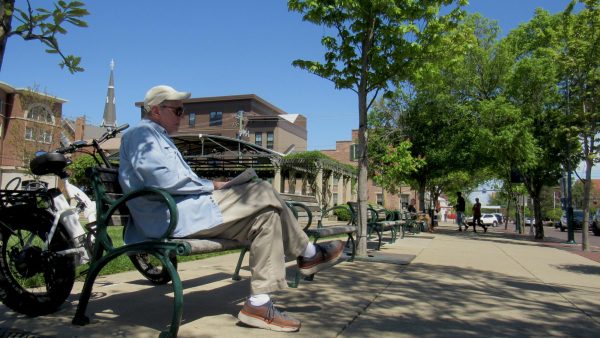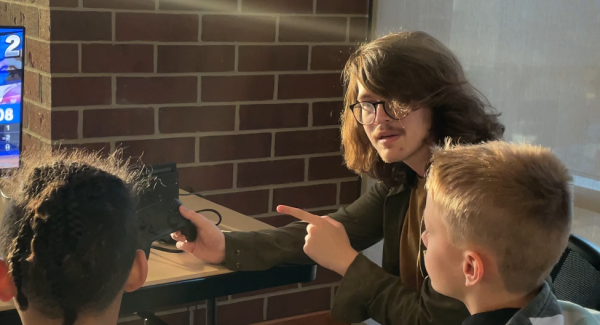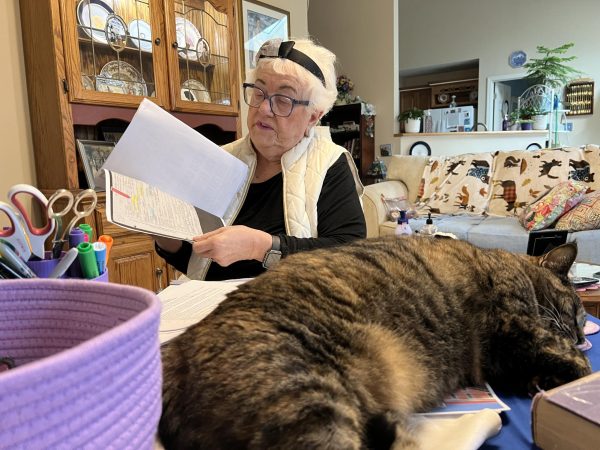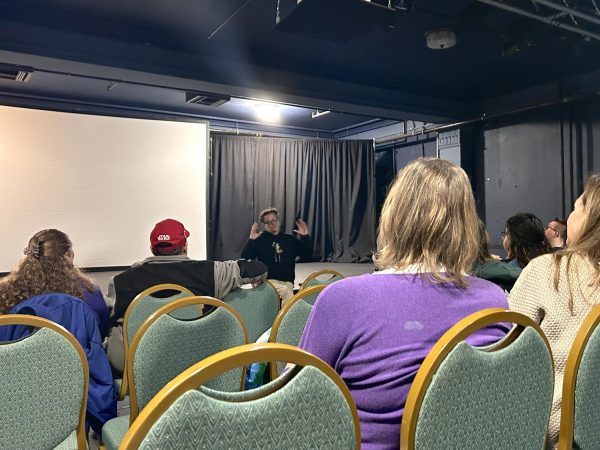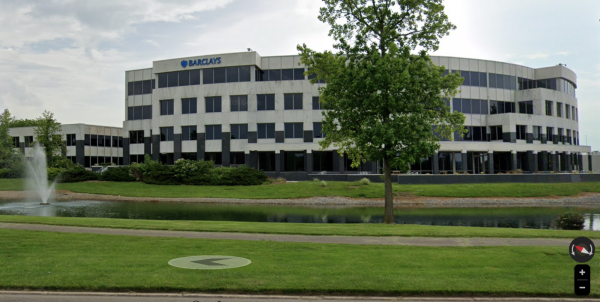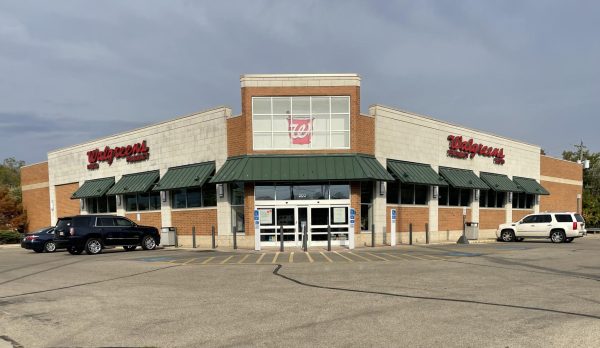Green funerals offer eco-friendly burial options
Green burial sites, such as this one at Heritage Acres Memorial Sanctuary, often are marked with natural materials including plants and brush rather than headstones or other manmade markers.
January 7, 2022
When it comes to end-of-life planning, a new “old” option is gaining popularity – the green burial.
Eco-friendly funerals are designed to leave the smallest carbon footprint possible – no embalming, no concrete vault or metal casket – just, literally, returning a body to the earth.
There is a wide array of options available when it comes to planning for what happens after death. Many assume that the only options are to be cremated or embalmed and buried, but that isn’t necessarily true.
Jessica Lohrey, program director at The Interfaith Center, in Oxford, wanted to make sure the community understood they had options when planning for the future. An informational event was held at the center, 16 S. Campus Ave., late last year with the Green Burial Council International. Bill Gupton of Heritage Acres Memorial Sanctuary, a green burial funeral home in Cincinnati, also spoke at the event.
According to the Green Burial Council, such a funeral is defined as “a way of caring for the dead with minimal environmental impact that aids in the conservation of natural resources, reduction of carbon emissions, protection of worker health, and the restoration and/or preservation of habitat.”
Gupton, a minister and green burial provider, is the founder and president of one of the two “green burial only” sites in the tri-state area. His Heritage Acres is not only a green burial site, but a nature preserve and nonprofit organization.
To participate in a green burial, the deceased is draped in a shroud or placed in a biodegradable softwood coffin.
Green burial methods also can replace traditional cremations, as was done in South Africa last week in the case of Nobel laureate and Anglican Bishop Desmond Tutu. As reported by CNN, Tutu chose to have his remains interred using an aquamation process. During aquamation, the body was processed chemically, in what is known as a flameless cremation.
It quickly decomposes soft tissues, leaving only bones to be pulverized and put in an urn for burial in the Jan. 1 service. The process is considered eco-friendly because it does not release greenhouse gases into the atmosphere the way standard high temperature cremation does.
A green burial moves away from the modern practices of the funeral industry, and more toward the traditional way humans have been buried for centuries, according to Gupton. It is more environmentally friendly and not profit driven, unlike modern funeral services, he said.
Thomas Bosarge buried his brother, Miklos Bosarge, at Heritage Acres in the spring of 2021. Since Miklos was always an avid naturalist, Thomas knew that he would want to return to nature after he died.
“It’s just a completion, natural completion to your life here on earth that you’re going to contribute in death to nature,” Thomas Bosarge said.
When touring Heritage Acres, Thomas and his younger brother saw a spot where dogwoods were blooming in the woods. Since dogwood was their mother’s favorite flower, they knew it would be the perfect place for Miklos.
During the burial, the gravesite was surrounded by rose petals and flowers to help beautify the site. Being surrounded by the beauty was extremely cathartic, Thomas said.
“When I go out to visit my brother’s burial site at Heritage Acres Memorial Sanctuary I almost always find some small flowers laid at the foot of his grave,” Thomas said. “The volunteers there are so caring. They continue to provide solace.”
Morgen Conn, a graduate student at Miami University, is studying the history of funerals and different burial practices. Conn believes the modern funeral industry does anything for profit, even if it is detrimental to the environment and to the grieving process.
“Once death becomes commercial, the corpse becomes a product,” Conn said.
Families are able to become much more involved in the process during a green burial. Many help dig the graves and after the body is lowered down, loved ones are able to toss dirt onto the casket. They can bring flowers to decorate the grave or use foliage found on the grounds. It becomes a milestone moment in the transitional period of their lives, according to Gupton.
“It helps people with healing and closure and an acceptance in reality of death,” Gupton said. “The intention is to assist in the process of people returning to the earth.”
The conventional funeral practice enforces ideas that death is dirty by changing the way we look at those who have died. By separating us from the entire process of death, we cannot come to grips with what death means, Conn said.
“When you think of funerals you think of nice, neat little packages,” she said.
The cleanliness of funerals is something that makes conversations about death difficult and accepting mortality nearly impossible, Conn said.
“We are so emotionally constipated,” she said. “We are so far removed from death care that we don’t have time to accept death or to see death as it is.”
In modern funerals, everything is possibly done to ensure that the corpse looks alive. Fillers are used in the face, layers of makeup cover and blemishes and the body is pumped with chemicals to keep it from decomposing. However, if a funeral is completed quickly, none of that is needed, according to Conn.
“You’re gonna be laid to rest very quickly, so there’s no need for embalming,” Conn said. “We like to preserve for no reason. That’s just a tradition that stuck.”
Caitlyn Hauke, president of the board of directors of Green Burial Council, said that one of the biggest myths of the burial process is that embalming is legally required. In fact, it is dangerous, as it seeps into the environment and can be harmful for the staff that handle the toxic chemicals, Hauke said.
In 2017, the National Funeral Directors Association reported in its Consumer Awareness and Preferences Study that while 62.5% of Americans said planning for one’s funeral was important, only 21.4% actually had done so.
Sites like Green Burial International or local green burial providers have picture examples of burial options, shrouded bodies surrounded by local flora that were picked by the family. Lohrey said that she has been greatly impacted by those images.
“I keep thinking about the beauty of that,” Lohrey said. “Just how artificial [it is] trying to, you know, box us into those caskets and it just doesn’t make sense.”
A green burial incorporates the family more into the process of burying a loved one. Instead of a sterile and formal funeral, it is natural and organic. Lohrey believes that it is about connecting and returning to nature through death.
“Nothing else in nature that dies is preserved,” Lohrey said. “It’s part of the cycle, that we should be going back into the earth without all the chemicals pumped into us. So, for me it’s recognizing the human place is in nature, that we’re part of it.”
In memorial gardens where green burials take place, mourners are surrounded by trees, grass and wild plants growing naturally. Some have hiking trails and wild deer roaming – reminding loved ones that the person they lost is surrounded by beauty.
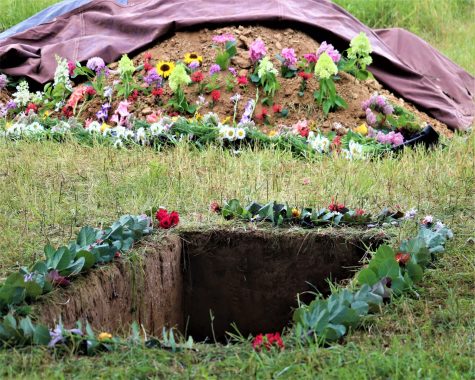
“When you go to cemeteries, you don’t get a sense of how things are growing,” Gupton said. “But here at Heritage Acres, it’s like going to a park. It is a very vibrant and alive feeling place.”
Laura Novak of Cincinnati plans to be buried at Heritage Acres and recently purchased her plot. She had never been a fan of conventional cemeteries, but after she went to the natural burial of a friend, she knew it was the right option for her.
“I was just drawn to this particular spot,” Novak said. “I decided it just felt right in my bones like everything felt like that was the spot and I stood there and I looked all around 360 degrees.”
By being able to mourn in nature and become involved in the process, loved ones are able to better grasp the full cycle of life. Gupton believes this helps in the grieving process.
Preserving the beauty of the land is one of the biggest arguments that those in favor of green burial make. Instead of reminding visitors of death by seeing headstone after headstone, they are able to grieve and visit lost loved ones in a peaceful setting.
Many of the green burial graves are marked with engraved rocks. They are often surrounded by lush plants, appearing more as a park than as a gravesite.
According to Green Burial Council, conventional burials use 1.6 million tons of concrete and 4.3 million gallons of embalming fluid. The aim of green burials is to avoid adding these toxic chemicals into the earth during the burial process.
Becky Newlin, chair of the board of trustees at The Interfaith Center, has been considering a green burial; she finally decided it was the right decision for her.
“We’ve come from the earth to return to the earth,” Newlin said. “We’re still a part of the grand scale of the universe.”
For those interested in learning more about green burials or Heritage Acres Memorial Sanctuary of Cincinnati, the Interfaith Center has posted the entire presentation as well as Q&A on their YouTube channel.


